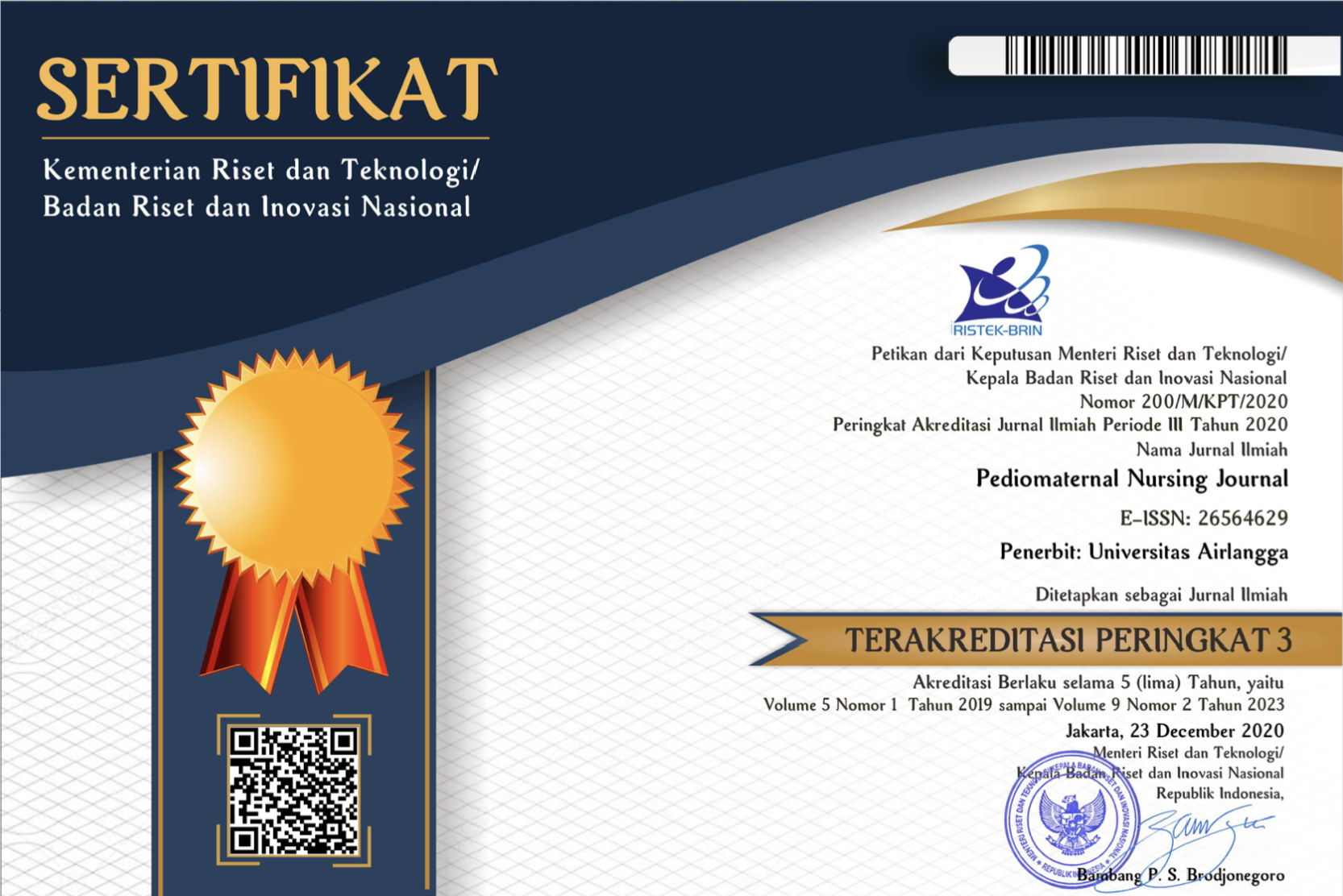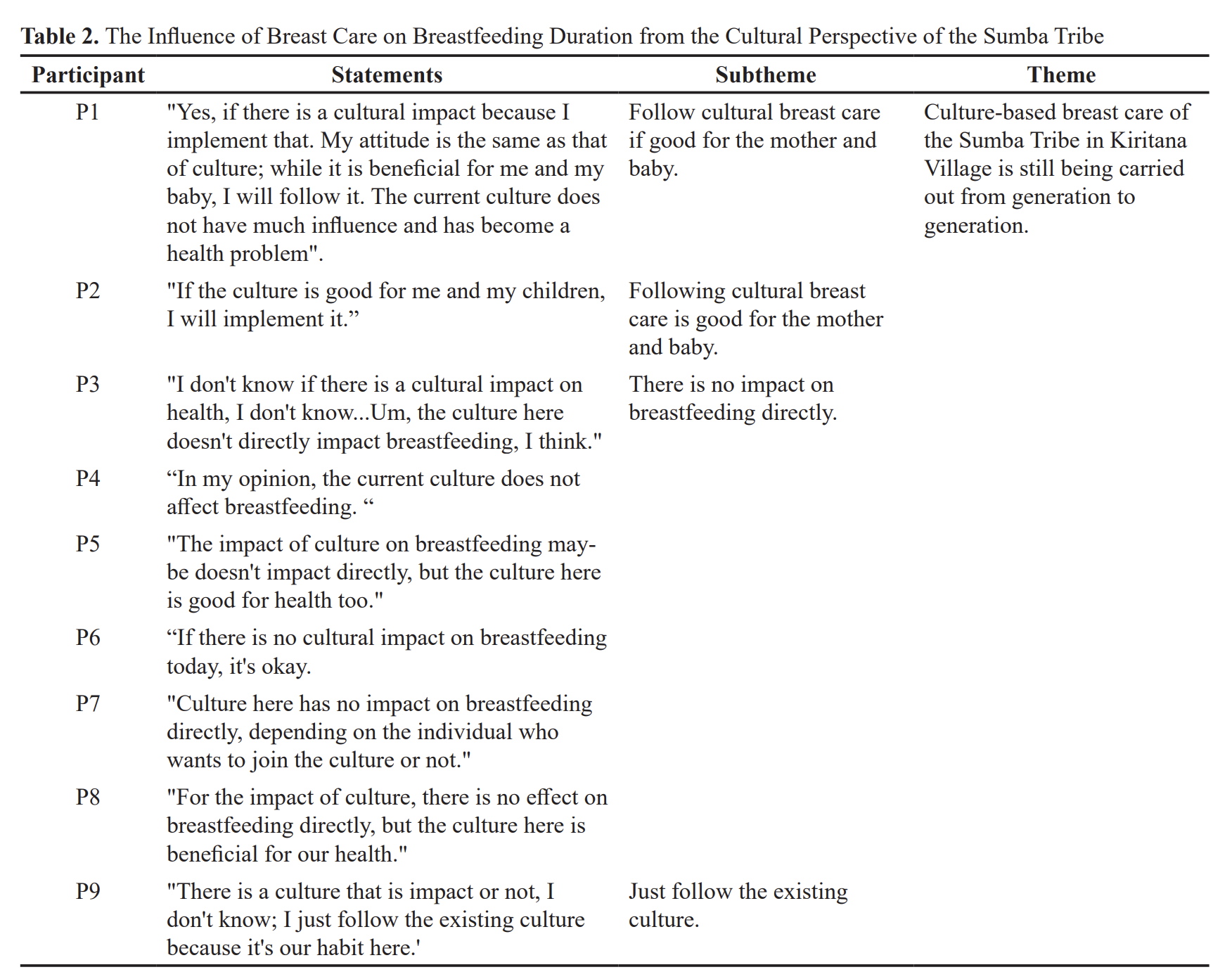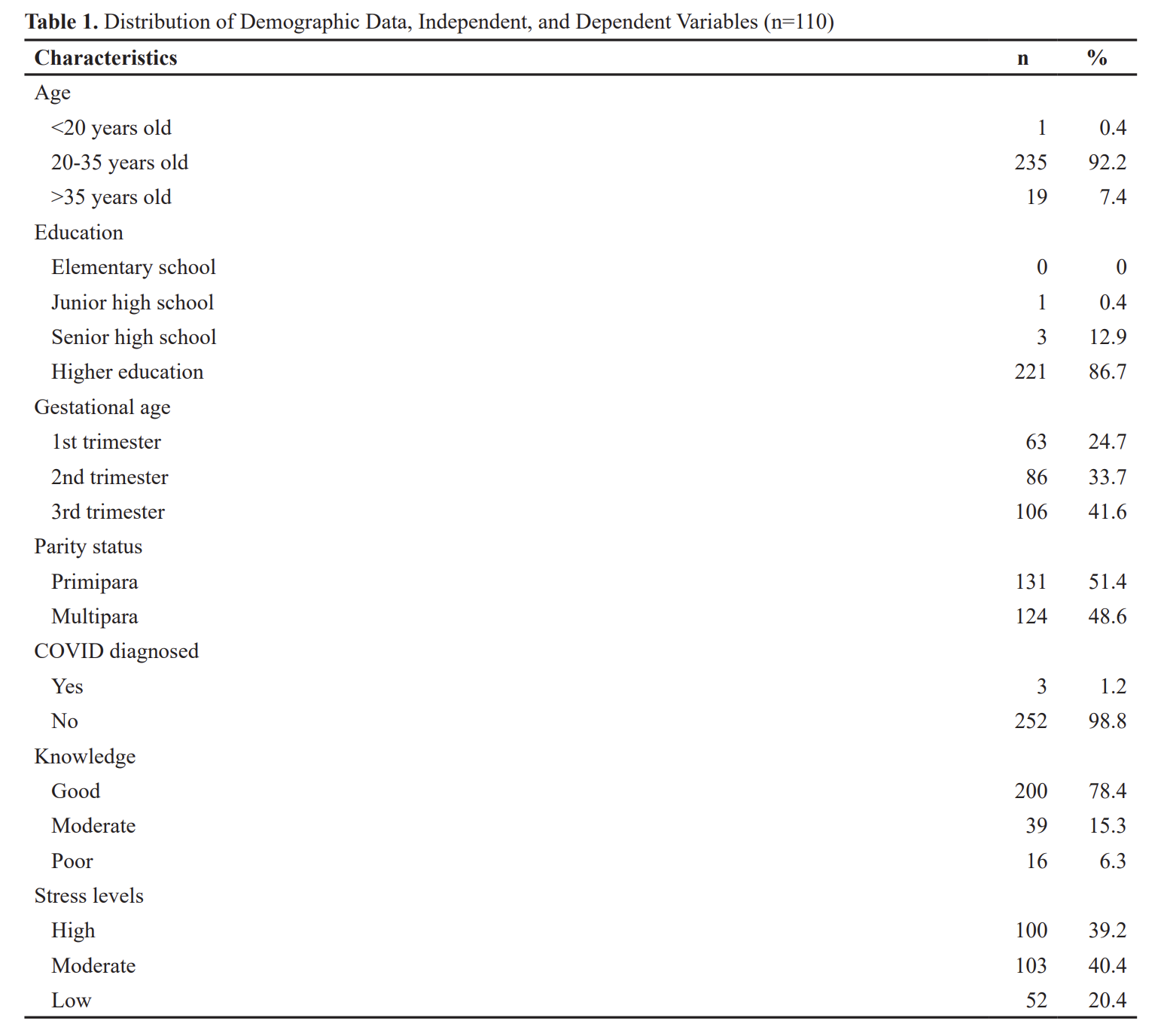Analysis Factors of the Intention of Postpartum Women using Long-Acting Reversible Contraceptive Based on the Theory of Planned Behavior
Downloads
Introduction:The use of Long-Acting Reversible Contraceptive (LARC) in postpartum women is still low even though the government recommends an effective method to decrease population growth. Attitude, subjective norm, and perceived behavioral control are background factors that shape people's intentions in displaying behavior. This study aimed to analyze the correlation between attitude, subjective norm, and perceived behavioral control with postpartum women's intentions using LARC.
Methods: This study used a descriptive correlational design with a cross-sectional approach. The populations were postpartum women ≤ 42 days in Tambaksari Sub-District Surabaya. The inclusion criteria were postpartum women who had not become KB acceptors and the exclusion criteria for postpartum women with widow status. The samples were 84 people that met using a purposive sampling technique. Data were collected with a questionnaire consisting of demographic data, attitude, subjective norm, perceived behavioral control, and intentionand analyzed using spearmen's rho test with a significance level of 0.05.
Results: The result showed that attitude (p=0.000 r=0.604) , subjective norm (p=0.000 r=0.610), and perceived behavioral control (p=0.000 r=0.608) had significant correlation with intentions.
Conclusion: The positive attitude, good subjective norm support, and robust perceived behavioral control give high intentions using LARC in postpartum women. The recommendations for future researchers are expected to conduct a comparative study of the behavior of choosing LARC and Non-LARC in postpartum women.Anggraeni, P. (2015). Determinan Penggunaan Metode Kontrasepsi Jangka Panjang (MKJP) Pada Akseptor KB di Wilayah Kerja Puskesmas Pamulang tahun 2014. In Kti.
BPS. (2016). Hasil Penduduk Indonesia Hasil SUPAS 2015.
BPS. (2018). No Title. Surabaya: Badan Pusat Statistik Surabaya. Diakses 2 Desember 2019.
Haloho, & Tety, E. (2011). Hubungan Antara Karakteristik, Pengetahuan dan Persepsi Ibu Terhadap IUD Dengan Pemilihan Kontrasepsi IUD Kecamatan Siantar Timur Kota Pematang Siantar Tahun 2011. In Skripsi. Depok: Universitas Indonesia.
Huda, A., Widagdo, L., & Widjanarko, B. (2016). Faktor-Faktor Yang Berhubungan Dengan Perilaku Penggunaan Alat Kontrasepsi Pada Wanita Usia Subur Di Puskesmas Jombang-Kota Tangerang Selatan. Jurnal Kesehatan Masyarakat (e-Journal), 4(1), 461–469.
Joeliatin. (2016). Theory of Planned Behavior on the Determinants of Participation in the Long-Term Contraceptive Method Among Women of Reproductive Age, in Nganjuk, East Java. Journal of Health Promotion and Behavior, 1(3). https://doi.org/10.269111
Kemenkes RI. (2013). Buletin Jendela Data dan Informasi Kesehatan: Situasi Keluarga Berencana di Indonesia. In Keputusan Menteri Kesehatan Republik Indonesia. Jakarta.
Mahmudah, L. T. N., & Fitri Indarwati. (2016). Analisis Faktor Yang Berhubungan Dengan Pemilihan Metode Kontrasepsi Jangka Panjang (MKJP) Pada Akseptor KB Wanita Di Kecamatan Banyubiru Kabupaten Semarang. Journal of Public Health, 4 No 3. https://doi.org/https://doi.org/10.15294/ujph.v4i3.7222.
Megawati, T., Febi, K., & Adisty, R. (2015). Hubungan antara Faktor-Faktor yang Mempengaruhi Penggunaan KB dengan Pengetahuan tentang KB di Wilayah Kerja Puskesmas Kapitu Kecamatan Amurang Barat. Jurnal Ilmiah Farmasi, 4(4). https://doi.org/2302-2493
Nasrulloh, A. (2015). Hubungan Antara Pengetahuan, Sikap, dan Dukungan Keluarga Dengan Keikutsertaan Pasangan Usia Subur (PUS) Dalam Ber-KB di Wilayah Kerja Puskesmas Purwosari Kota Surakarta. In Skripsi. Surakarta: Universitas Muhammadiyah Surakarta.
Nursalam. (2017). Metodologi Penelitian Ilmu Keperawatan: Pendekatan Praktis. Jakarta: Salemba Medika.
Putri, A. P. (2018). Identifikasi Perilaku Pasangan Usia Subur Terhadap Keikutsertaan Program Keluarga Berencana Dengan Pendekatan Teori Perilaku yang Terencanakan (Theory of Planned Behavior). Jurnal Terpadu Ilmu Kesehatan, 7(1).
Ruwayda. (2014). Faktor-Faktor yang Berhubungan dengan KB Pasca Salin pada Ibu Nifas di Wilayah Kerja Puskesmas Pakuan Baru Kota Jambi Tahun 2013. Jurnal Ilmiah Universitas Batanghari Jambi, 14(1). https://doi.org/10.33087/jiubj.v14i1.306
Satria, G. (2015). Perilaku Pemilihan Metoda Kontrasepsi Vasektomi pada Proa Pasangan Usia Subur Berdasarkan Theory of Planned Behavior (TPB) Di Kecamatan Kenjeran Surabaya. In Skripsi. Surabaya: Universitas Airlangga.
SDKI. (2017). Survey Demografi Kesehatan Indonesia. Jakarta: BKKBN, BPS, Kemenkes, USAID.
Septalia, R., & Puspitasari, N. (2016). Faktor yang Mempengaruhi Pemilihan Metode Kontrasepsi. Jurnal Biometrika dan Kependudukan. 5(2). https://doi.org/http://dx.doi.org/10.20473/jbk.v5i2.2016.91-98
Setiasih, S., Widjanarko, B., & Istiarti, T. (2016). Analisis Faktor-faktor yang Mempengaruhi Pemilihan Metode Kontrasepsi Jangka Panjang (MKIP) pada Wanita Pasangan Usia Subur (PUS) di Kabupaten Kendal Tahun 2013. Jurnal Promosi Kesehatan Indonesia, 11(2), 32. https://doi.org/10.14710/jpki.11.2.32-46
Susanto, B. N. A. (2015). Hubungan Antara Dukungan Suami Terhadap Istri Dengan Keputusan Penggunaan Alat Kontrasepsi Di Wilayah Kerja Puskesmas Ngemplak Boyolali. 14.
Copyright (c) 2020 Tantya Edipeni Putri, Retnayu Pradanie, Tiyas Kusumaningrum

This work is licensed under a Creative Commons Attribution 4.0 International License.
1. The journal allows the author to hold the copyright of the article without restrictions.
2. The journal allows the author(s) to retain publishing rights without restrictions.
3. The legal formal aspect of journal publication accessibility refers to Creative Commons Attribution (CC BY).





















